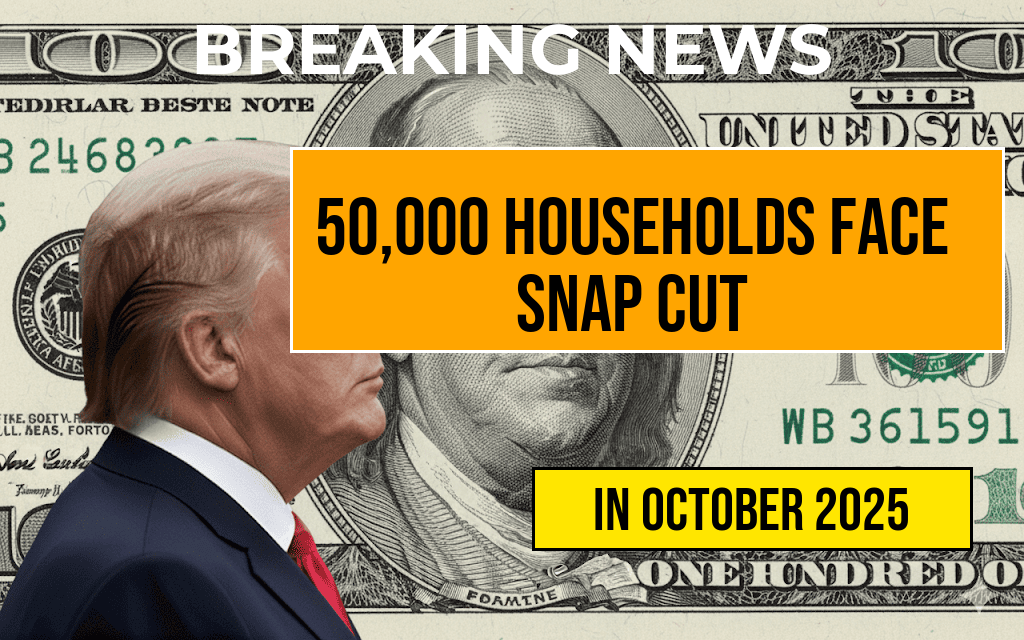Beginning this November, approximately 50,000 households across the United States will see a significant reduction in their SNAP benefits, with an average decrease of about $58 per month. This adjustment results from changes in federal policy linked to the end of pandemic-related supplemental nutrition assistance measures and ongoing adjustments to benefit calculations. For many families who rely heavily on SNAP, this reduction could impact their ability to afford essential groceries, raising concerns about food security amid economic uncertainties. The shift is part of broader efforts to recalibrate social safety net programs as emergency aid phases out, prompting both advocacy groups and policymakers to scrutinize the potential implications for vulnerable populations.
Background on SNAP Policy Changes
End of Pandemic-Era Benefits
The Supplemental Nutrition Assistance Program (SNAP), formerly known as food stamps, experienced a series of temporary enhancements during the COVID-19 pandemic, including increased benefit amounts and relaxed eligibility criteria. These measures aimed to mitigate economic hardship caused by widespread job disruptions and health crises. As the federal government transitions out of emergency declarations, many of these temporary benefits are reverting to pre-pandemic standards, resulting in noticeable cuts for some recipients.
Impact of Policy Adjustments
The upcoming reduction reflects the expiration of increased benefit levels, which had temporarily boosted monthly SNAP allocations by approximately 15%. Now, households are adjusting to a new baseline based on standard income and household size calculations. According to the USDA Food and Nutrition Service, this recalibration is routine but can be disruptive for families already facing financial challenges.
Demographic Breakdown of Affected Households
| State | Number of Affected Households | Average Monthly Reduction ($) |
|---|---|---|
| California | 8,500 | $60 |
| Texas | 7,200 | $55 |
| Florida | 4,800 | $58 |
| New York | 3,500 | $57 |
| Rest of U.S. | 26,000 | $58 |
These reductions are expected to disproportionately affect low-income families, including elderly individuals and households with children. The Center on Budget and Policy Priorities emphasizes that even modest cuts can have significant consequences for household food security, potentially leading to increased reliance on emergency food programs or debt.
Community and Policy Responses
Advocacy and Public Concerns
Food assistance advocates warn that the upcoming reductions threaten to deepen food insecurity, particularly in regions already experiencing high rates of poverty. “For families living paycheck to paycheck, losing $58 each month can mean the difference between putting food on the table or going hungry,” said Maria Lopez, director of a community food bank network. Several organizations are urging policymakers to consider mitigation strategies or phased reductions to lessen immediate impacts.
State-Level Interventions
Some states are exploring measures to buffer the effect of federal benefit cuts. For example, California and New York have announced plans to expand local food assistance programs or provide supplementary aid to vulnerable groups. Experts note that state-level initiatives could play a critical role in preventing a spike in food insecurity during this transition period.
Broader Economic Context
Employment Trends and Inflation
The reduction in SNAP benefits coincides with ongoing economic challenges, including inflation-driven food prices and fluctuating employment rates. The U.S. Bureau of Labor Statistics reports that while employment has recovered in many sectors, wages have not kept pace with rising living costs for all workers. This disparity exacerbates reliance on government assistance programs among low-income households.
Long-term Outlook
Experts suggest that while benefit reductions are a normalization after pandemic-era expansions, they also highlight the need for comprehensive social safety nets that accommodate economic shifts without jeopardizing basic needs. Policy analysts argue that future reforms should balance fiscal responsibility with safeguards against food insecurity, especially as federal relief measures continue to evolve.
Frequently Asked Questions
What is the reason for the SNAP reduction in November?
The SNAP benefits are being reduced by $58 per month for approximately 50,000 households due to changes in federal funding and policy adjustments.
How many households are affected by the SNAP benefit decrease?
Approximately 50,000 households will experience a monthly reduction of $58 in their SNAP benefits starting this November.
When will the SNAP benefit reduction take effect?
The reduction in SNAP benefits will begin this November.
What can affected households do to prepare for the SNAP reduction?
Households should review their budget and consider alternative resources or assistance programs. It’s also advisable to contact local human services agencies for support and guidance.
Are there any plans to reverse or mitigate the SNAP reductions?
Currently, there are no announced plans to reverse or mitigate the SNAP benefit reductions, but affected households can stay informed through official federal and state agency updates.







